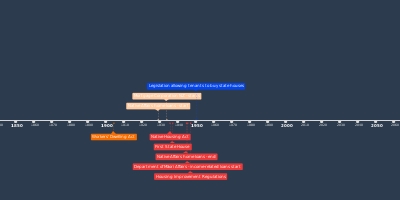jun 6, 2003 - Report finds Auckland growing faster than expected, recommends high density housing
Description:
Auckland City is growing much faster than anyone expected and will need to build higher-density housing to squeeze everyone in, says a new report.The city's population - about 400,000 at present - is heading towards 530,000 by 2021, according to Statistics New Zealand projected growth figures.
Immigration accounts for 37 per cent of the increase. Natural growth and a nationwide drift to Auckland are other factors.
The 2021 population figure is 55,000 more than when the council last forecast population growth using 1996 figures.
This booming growth will lead to whole suburbs being rezoned to allow higher density housing developments than at present, according to council planners in a report, How Should Auckland Grow?
The report is short on details, but one of its authors, Penny Pirrit, said the council was not looking beyond the proposed Residential 8 zone, which allows for housing developments of up to three storeys in residential areas, up to four storeys near town centres and up to five storeys within 2km of the central business district.
Priority areas for growth include the central business district, Newmarket, Glen Innes, Panmure, Mt Wellington quarry, Otahuhu and Avondale - followed by Remuera, Ellerslie, Sylvia Park, Grey Lynn, Pt Chevalier, Mt Albert and Onehunga.
If developers can find "innovative drainage solutions", the suburbs of Mt Roskill, Sandringham, Morningside, Balmoral and Royal Oak will also be released for growth.
The central business district and suburbs along the Tamaki River - Glen Innes, Mt Wellington, Tamaki, Panmure and St Johns - are targeted to take the business growth.
The report comes amid growing anger at the council for approving high-density development against the wishes of communities and amid calls to halt intensification.
A spokesman for the Panmure Action Group, Keith Sharp, was alarmed to discover the population figures had been revised up by 55,000, given months of hard work between the council and residents to draw up a "liveable community plan" based on the old figures.
"Are they going to come back to us and say the plan we negotiated with them isn't enough?
"I would hate to be in the shoes of the council official or politician who tries to change the plan now," Mr Sharp said.
The authors of the report, including planning director Dr Jill McPherson, warn of the difficulties to politicians and council officers of rezoning suburbs and changing the negative perceptions of intensification - leaky buildings and cheap, overcrowded homes for the poor.
The report also nominates a number of areas to be spared the extra growth for their character, heritage and environmental qualities, although they are still subject to current development plans in the district plan.
They are Parnell, Ponsonby, Mt Eden, Valley/Dominion Rd, Kingsland, Greenlane, Greenwoods Corner, Market Rd and Waiheke Island.
City development committee chairwoman Juliet Yates said growth was happening more quickly than expected but by taking steps, such as introducing urban design guidelines, the council would be able to protect the valued characteristics that made Auckland a city people wanted to live in.
"Growth will happen regardless. It's a question of do you want people living in garages or do you want people living in quality dwellings."
Source: Auckland City faces growth explosion.
By Bernard Orsman.
539 words
6 June 2003
New Zealand Herald
Added to timeline:
Date:
jun 6, 2003
Now
~ 22 years ago
